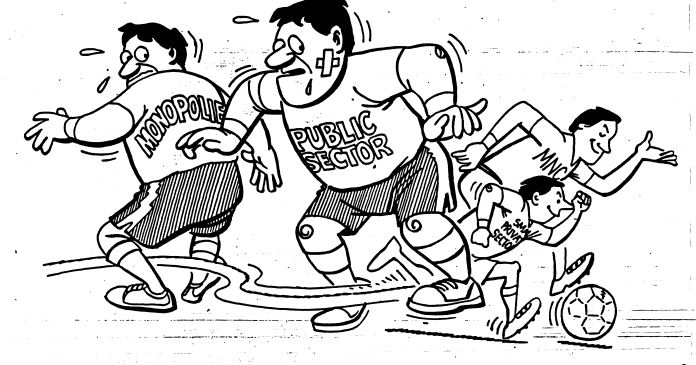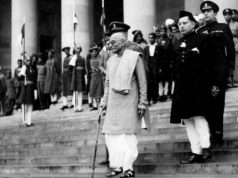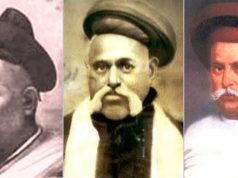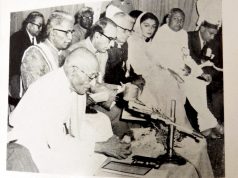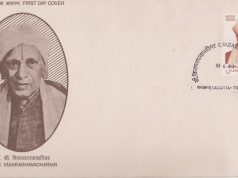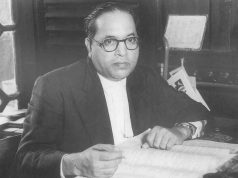In the following article on liberalism in India first appeared in the December 1995 issue of the Liberal Times, a quarterly journal published by Friedrich Naumann Foundation.
There is a revolutionary change in the atmosphere, and it is entirely due to the economic reforms. And yet, no one boasts of the reforms; no one celebrates the reforms. This shyness, this awkwardness arises from the fact that liberty is not accepted in India as the ultimate goal of political systems. This is why, for instance, there is so much paranoia about foreign investments.
Control Regime: Inheritance of the War Economy
As part of the British empire, India took part in the Second World War on the side of the Allies; it thereby also became a part of the economic machine created by the Allies to fight the war. This economic machine embodied stringent controls. For instance, shortage of shipping and the risk of its loss on high seas led to the rationing of shipping space and hence of imports; to allocate the scarce imports, a Chief Controller of Imports and Exports was set up. The high war expenditure generated inflation and shortages; to protect the urban population from food shortages, a system of food-grain procurement and distribution was set up. Imported and local raw materials had to be rationed out amongst industrial firms; to govern this allocation, productive capacities of firms were monitored and controlled. In this way, a comprehensive framework of economic controls was built up during the war.
After the war, inflation and shortages continued, and they justified the continuance of wartime controls. So, when India became independent in 1947, it had a very comprehensive system of controls. Independence was followed by conflict in power-sharing between the industrialised provinces on the eastern, western and southern coasts and the northern agricultural hinterlands: in a democratic framework, the unindustrialised north won. Hence, the government retained the controls as a means of keeping the industry on a leash and bending it to the will of the north. Socialism was a mere slogan, in India as elsewhere: it was a means of regulating conflicts between regions and between classes. Over the ensuing forty years, the system of controls was used for favouring the development of the north to the retardation of the more advanced regions, and concurrently to favour the growing educated middle class against owners of industry. The major instruments of control employed were:
Industrial licensing:
This was used at various times for favouring state enterprises, small enterprises and co-operatives (which were mostly a form of state enterprises) against large and foreign enterprises.
Control of capital flows:
Through central ownership of the major banks as well as long-term investment Institutions, the government-controlled the flow of investible funds to the industry. This control further reinforced industrial licensing.
Import controls:
These were primarily used for favouring import substitution. But within import-substituting enterprises, the same priorities were followed as in industrial licensing. In particular, state enterprises were favoured against private enterprises.
Agriculture procurement and distribution:
These controls were initially employed for ensuring secure and cheap supplies of food-grains for the urban population. But as farmers acquired political power, the aim of agricultural controls also changed to raising farm incomes through high prices.
Discriminatory taxation:
This further reinforced the preferences embodied in the other controls. But as the taxes rose, pressure grew from various lobbies, and exemptions and rebates were induced which made the tax systems, both at the centre and in the states, very complex.
Liberalisation Episodes without Liberal Philosophy
This comprehensively controlled system was highly inefficient and ran into a crisis every few years. But when this happened, some of the controls were relaxed to induce competition and to curb inefficiency. As the economy grew, the old-style, labour intensive controls also became impractical, so they were modified to accommodate the growth in the size and complexity of the system. But as soon as a crisis was over, the system tended to return to its old mode. This was because powerful interests grew up in politics, bureaucracy and industry which benefited from the controls.
The bouts of relaxation of controls were termed liberalisation episodes by Bhagwati and Srinivasan, and so they were in a sense. In every episode, certain controls – mainly industrial licensing and import licensing – were relaxed. But liberalisation had a practical aim, namely to reduce systemic inefficiency to sustainable levels. There was economic liberalisation, but there was no liberal philosophy behind it.
Liberal Philosophy
Liberal philosophy has two roots. There is the liberalism of Western Europe – the liberalism of the Whigs and the Liberals in Britain and the Liberal Party in Germany: comparable parties were to be found in most western Europe countries. This liberalism was an outgrowth of monarchic systems and developed in conflict with monarchic autocracy. It opposed absolutism and put forward individual freedom protected by the rule of law. As monarchic systems gave way to managed democracies, kings were replaced by conservative parties – parties of property owners which tried to use the state for the preservation of hierarchical systems. This change in the character of the ruling elite led to a change in the orientation of liberals. Besides individual freedom and the rule of law, liberals also came to espouse a caring state which assumed growing social responsibilities – responsibilities towards the poor but later towards entire populations. These responsibilities came to be taken even more seriously after the Second World War. The draconian systems of taxation that were built up during the war yielded large surpluses once the need for wartime expenditures was over. At the same time, the war left a great deal of devastation in some countries. Hence the surpluses were used in industrial countries to fund social services. In this way, very elaborate systems of social security were built up. In a sense, social liberalism triumphed over personal liberalism in the post-war era.
Social Liberalism
India belongs to that post-war era and was more influenced by social liberalism. The highly attractive ideals of social insurance, health insurance, free education etc. were readily received. But the means to finance those laudable social services were very limited. The result was that the services always ran in the midst of unmanageable shortages, their reach remained limited and fitful. The failure of social liberalism in India is a failure to match the means to the ends.
Idea of Personal Liberty
On the other hand, libertarianism has always been a weakly growth in India. The basis of libertarianism is the idea of human freedom and the related idea of tolerance for the freedom of others. Indians regard themselves as highly tolerant. But tolerance is relative. Because India is such a large and diverse country, diversity gives Indians the feeling that they tolerate it. But the same diversity leads them to put curbs on individual freedom designed to keep down social tensions. Thus, there have been occasions when the Indian government has banned publications. Yet, bans are not frequently imposed; and the grounds for the bans are very limited. The most common are religion and history; the object every time is to avoid offending some religious or parochial sentiment. Despite their limited scope, the bans reflect a widespread underlying consensus that personal freedom must be curbed for the sake of social order. Instead of an ideology of personal liberty, there is an underlying sense of personal duty; of restraint on behaviour, enforced if necessary, by the state.
Economic reforms: On the Defensive
This, in my view, is why the liberal economic reforms since 1991 have always been on the defensive. It is not for lack of success; starting from an abyss of collapsed growth and self-confidence, the economy is growing today at a very creditable rate which may well touch 11 per cent this year. The balance of payments, which was impossibly adverse only four years ago, is strong today. The industry is growing at 13 per cent. Apart from these cold statistics, there is for the first time a sense of excitement in the air, people feel that there are undefinable opportunities, unquantifiable hope. This is a revolutionary change in the atmosphere, and it is entirely due to the economic reforms. And yet, no one boasts of the reforms, least of all those who did the reforms. No one celebrates the reforms. A certain shamefaced modesty pervades the reforms. This is strange and inappropriate.
This shyness, this awkwardness arises from the fact that liberty is not accepted in India as the ultimate goal of political systems. This is why, for instance, there is so much paranoia about foreign investments. The foreign enterprise is seen as an intruder upon the economic space of the Indian enterprise, just as yesterday, the large enterprise was seen as an intruder on the space of the small enterprise, or the private enterprise as an intruder on the space of the government enterprise. The idea that the consumer is sovereign, that it is in the consumer’s interest that all enterprises, Indian and foreign, small and large, private and public, should compete in a level playing field, is still very foreign to India. The idea that choice is a part of individual freedom, that an individual should be able to choose from where he wants to buy his electricity or telephone services, is still very grudgingly accepted, and even then, many people would make all sorts of unnecessary reservations. The whole point of being the national of such a large and diverse country as India is to be free – free to believe what one likes, free to do what one likes, as long as it does not impinge on others’ freedom. Now that economic liberalism has arrived, almost by stealth, we must cultivate extremism in the service of liberty; only then will we provoke a fertile ground for the growth of economic liberalism.
The original document can be accessed here.
IndianLiberals.in is an online library of all Indian liberal writings, lectures and other materials in English and other Indian regional languages. The material that has been collected so far contains liberal commentary dating from the early 19th century till the present. The portal helps preserve an often unknown but very rich Indian liberal tradition and explain the relevance of the writings in today’s context.
Post Disclaimer
The opinions expressed in this essay are those of the authors. They do not purport to reflect the opinions or views of CCS.

